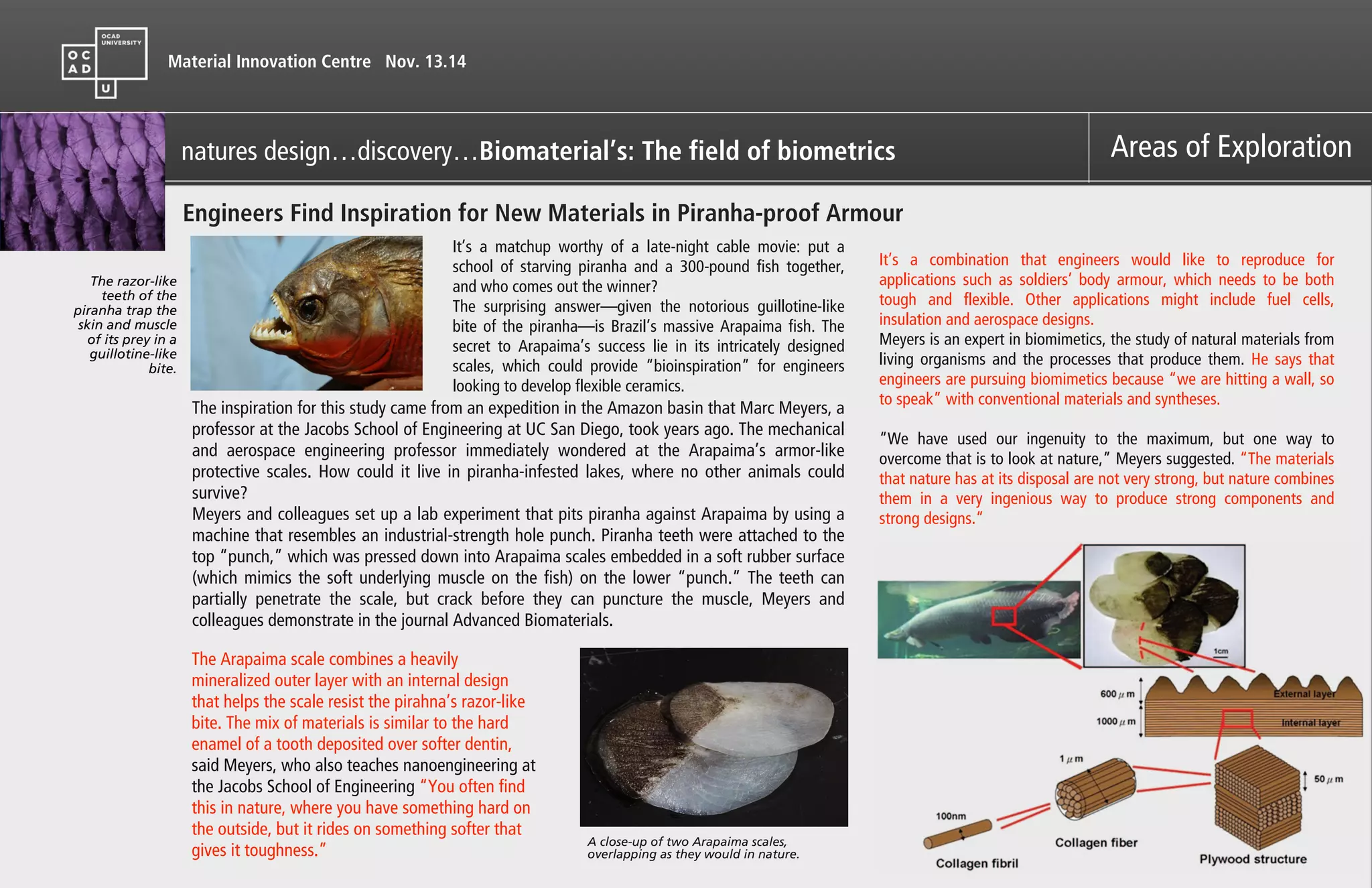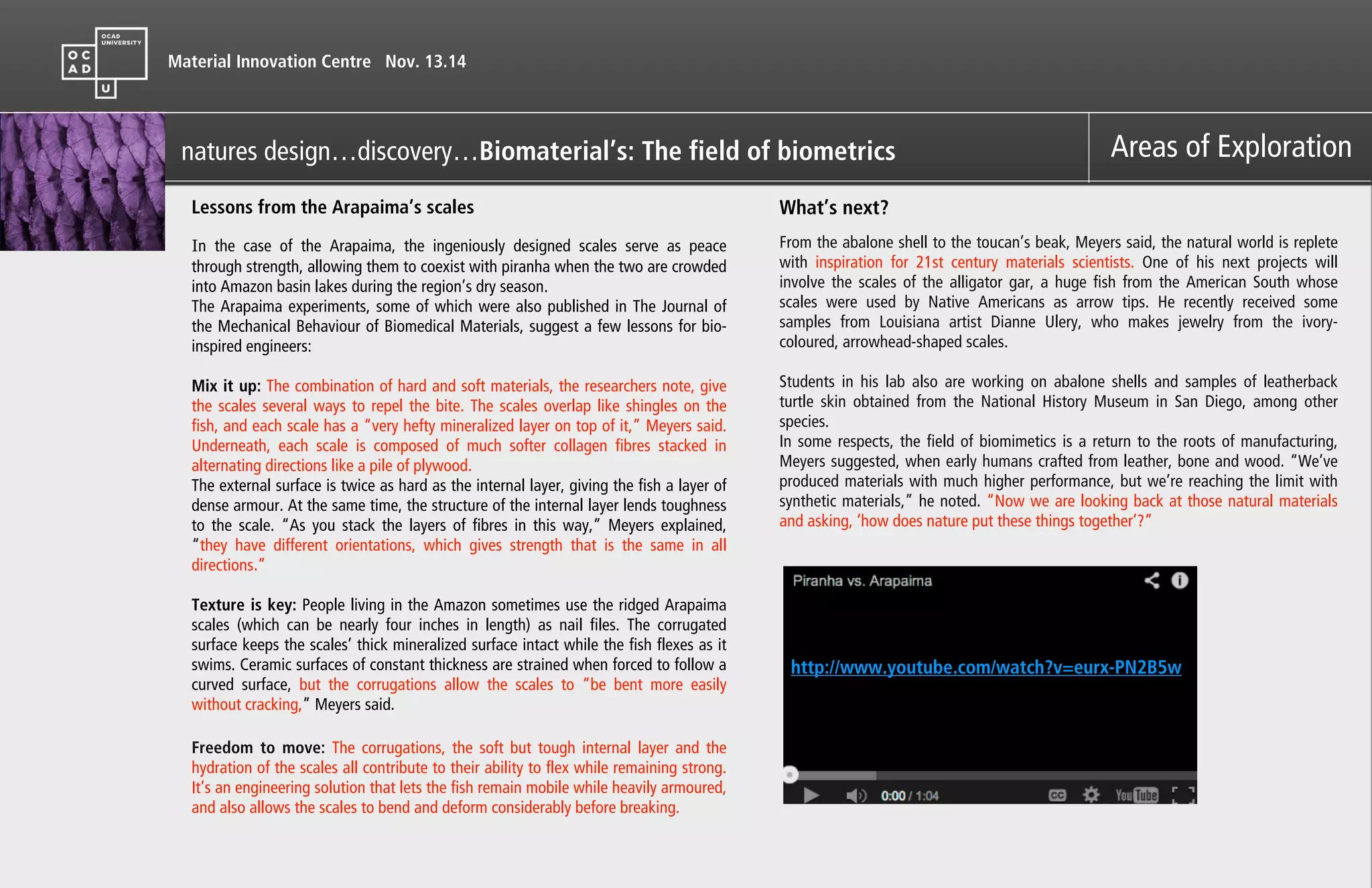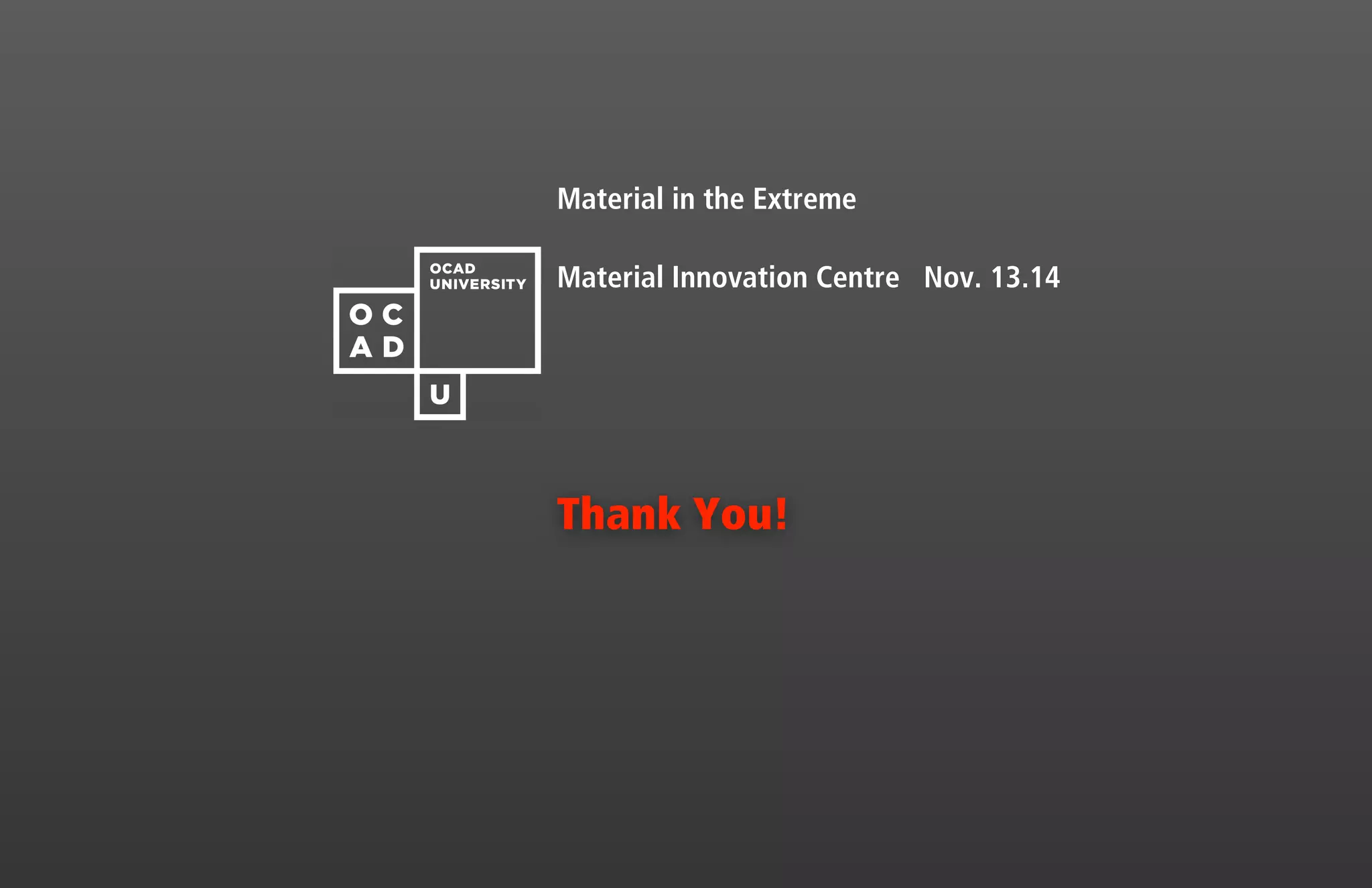Richard Garvin is an instructor and retail expert based in Canada. He has experience designing for retailers globally and a specialized interest in emerging trends, technologies, and product innovation. The document discusses several of Richard's past projects involving space suits, deep sea diving equipment, exoskeletons, and smart textiles. It also explores potential new applications of technologies inspired by natural materials and designs.

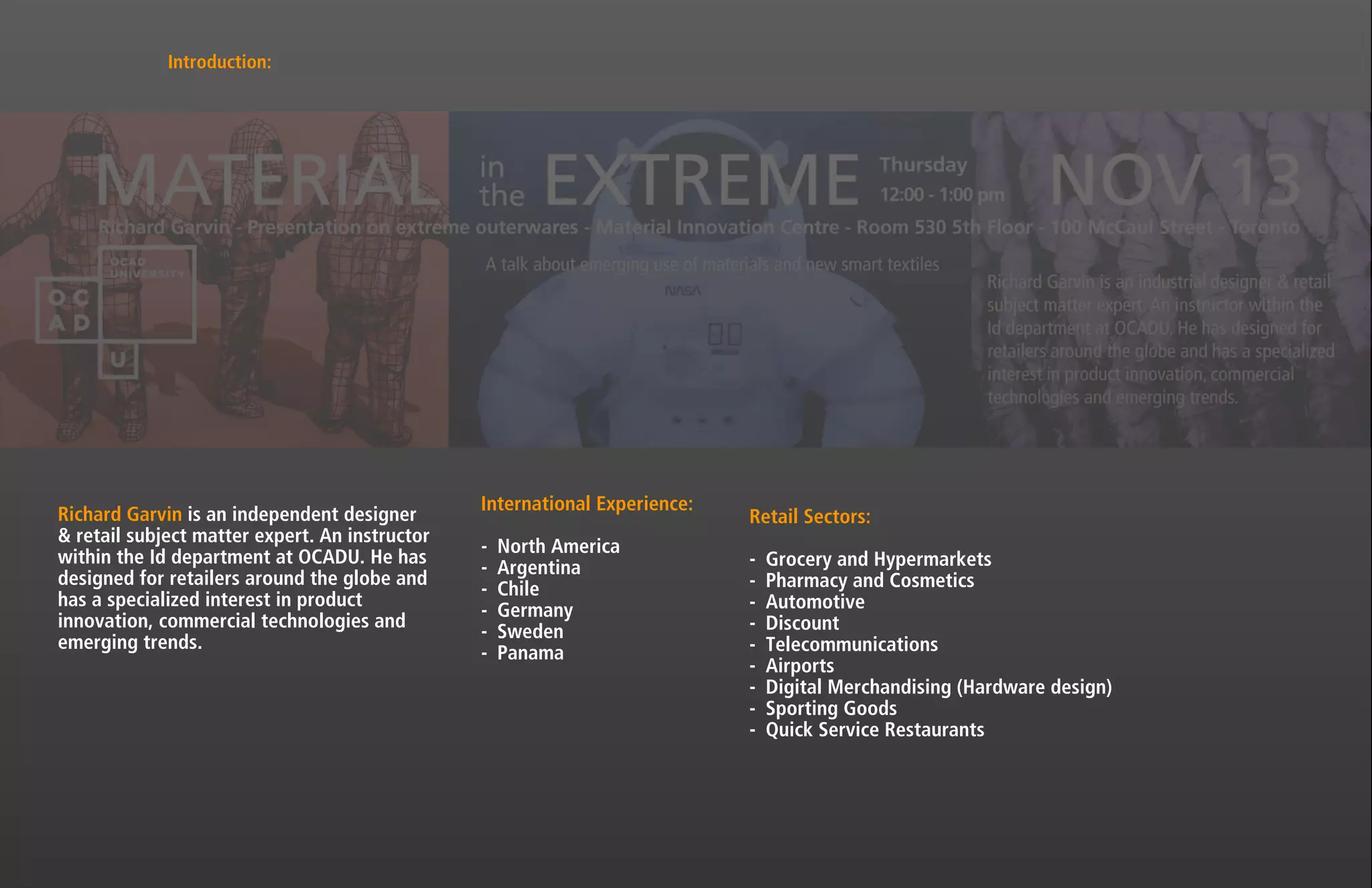
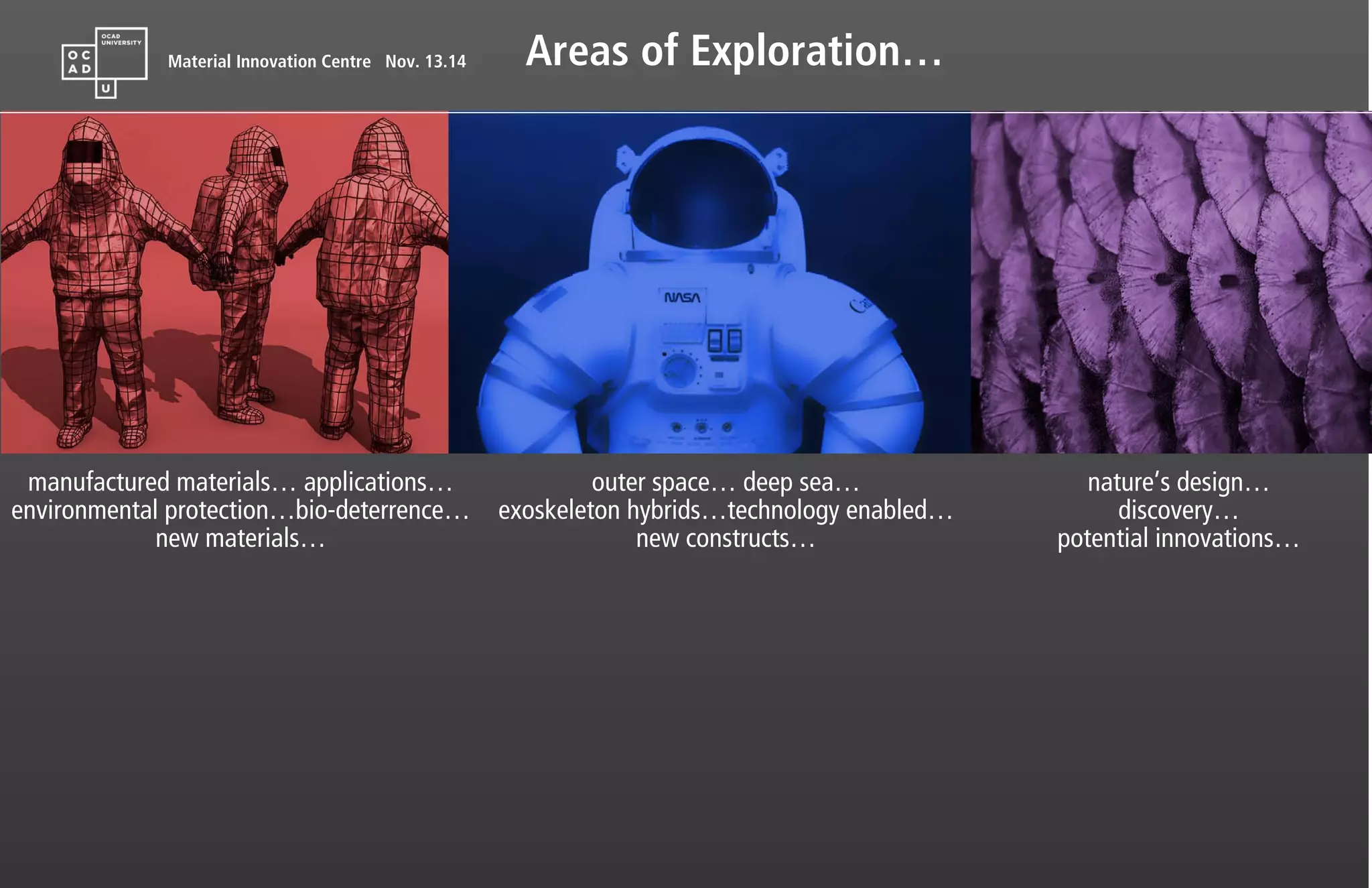
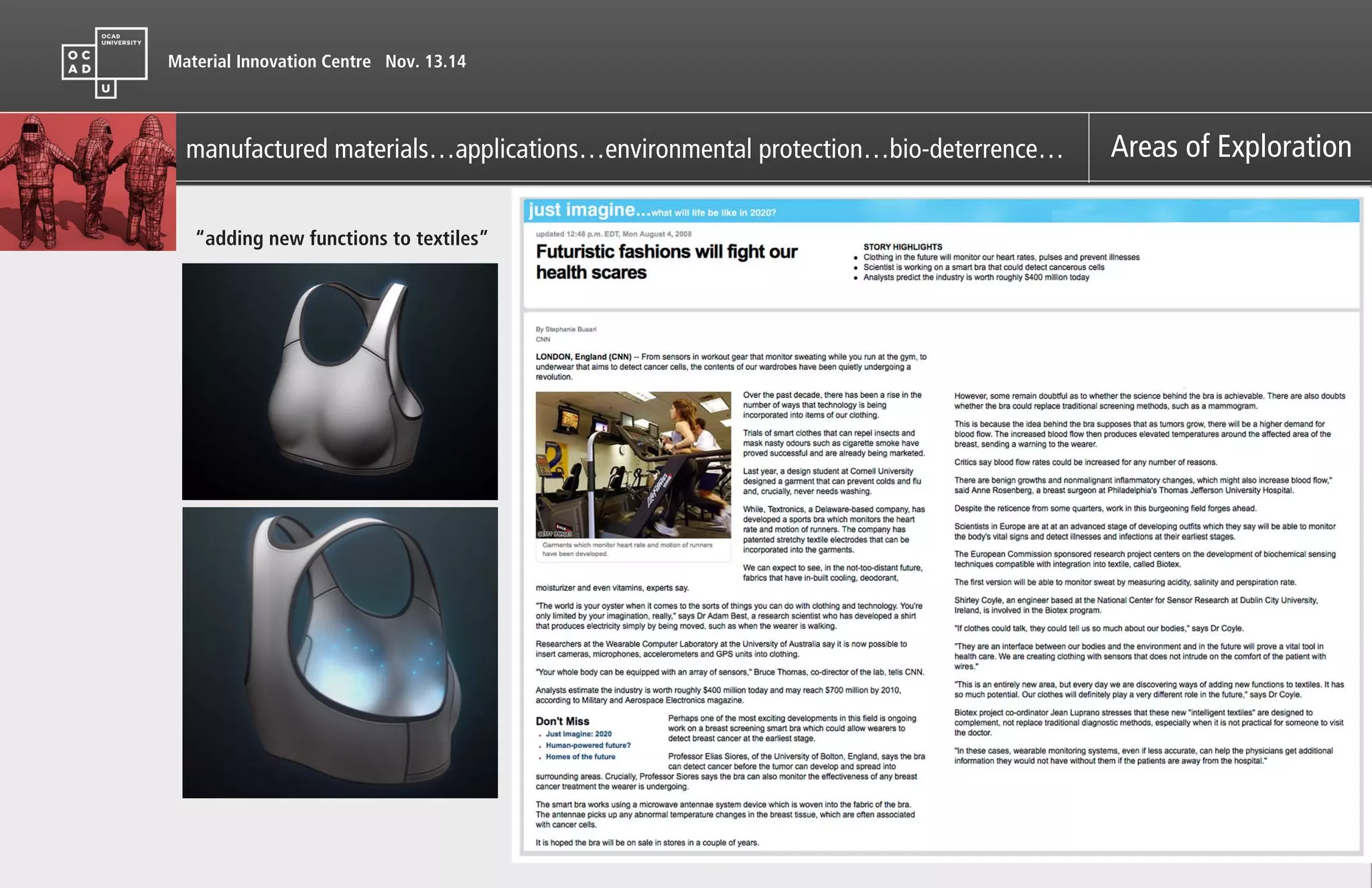
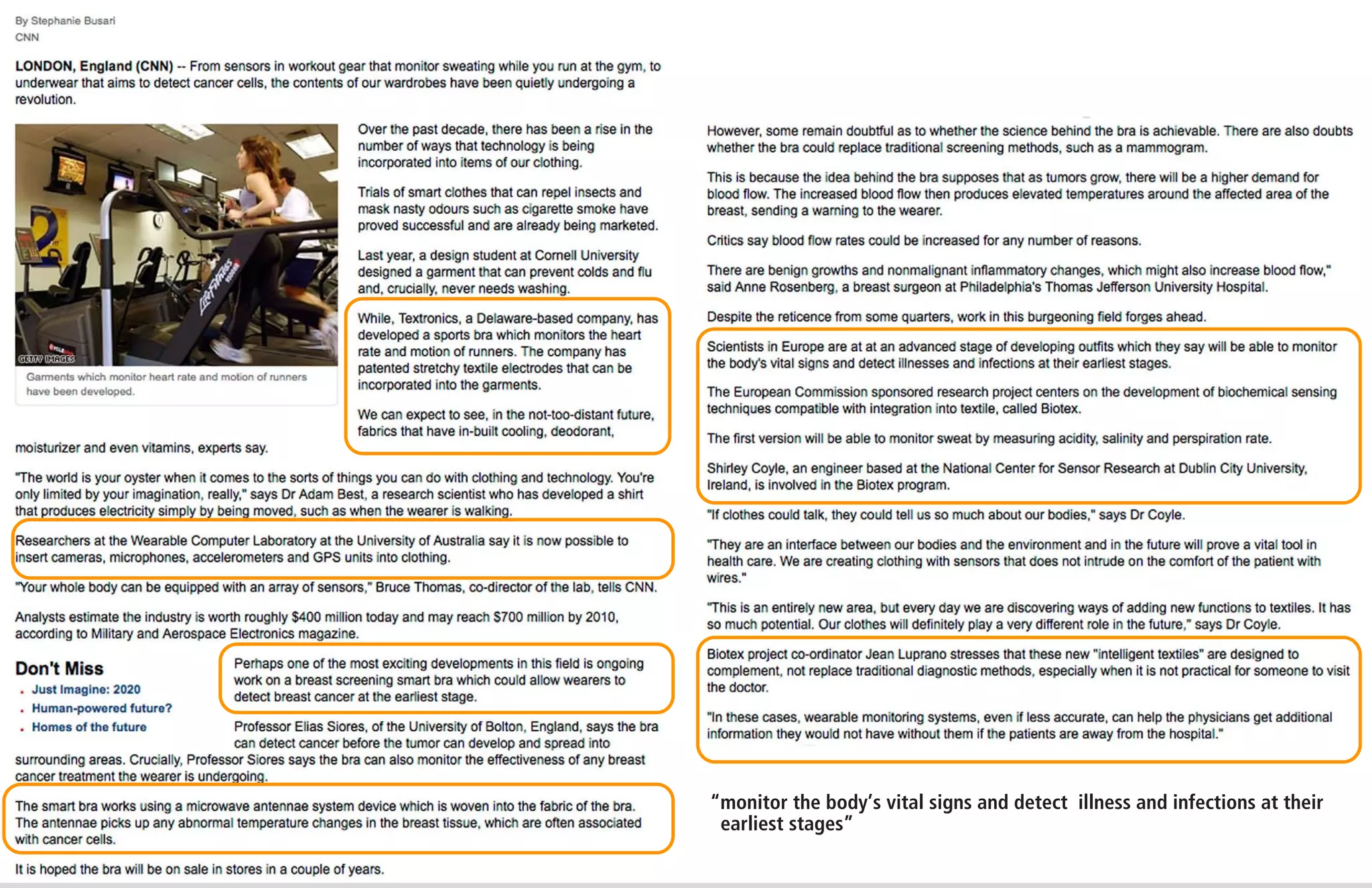

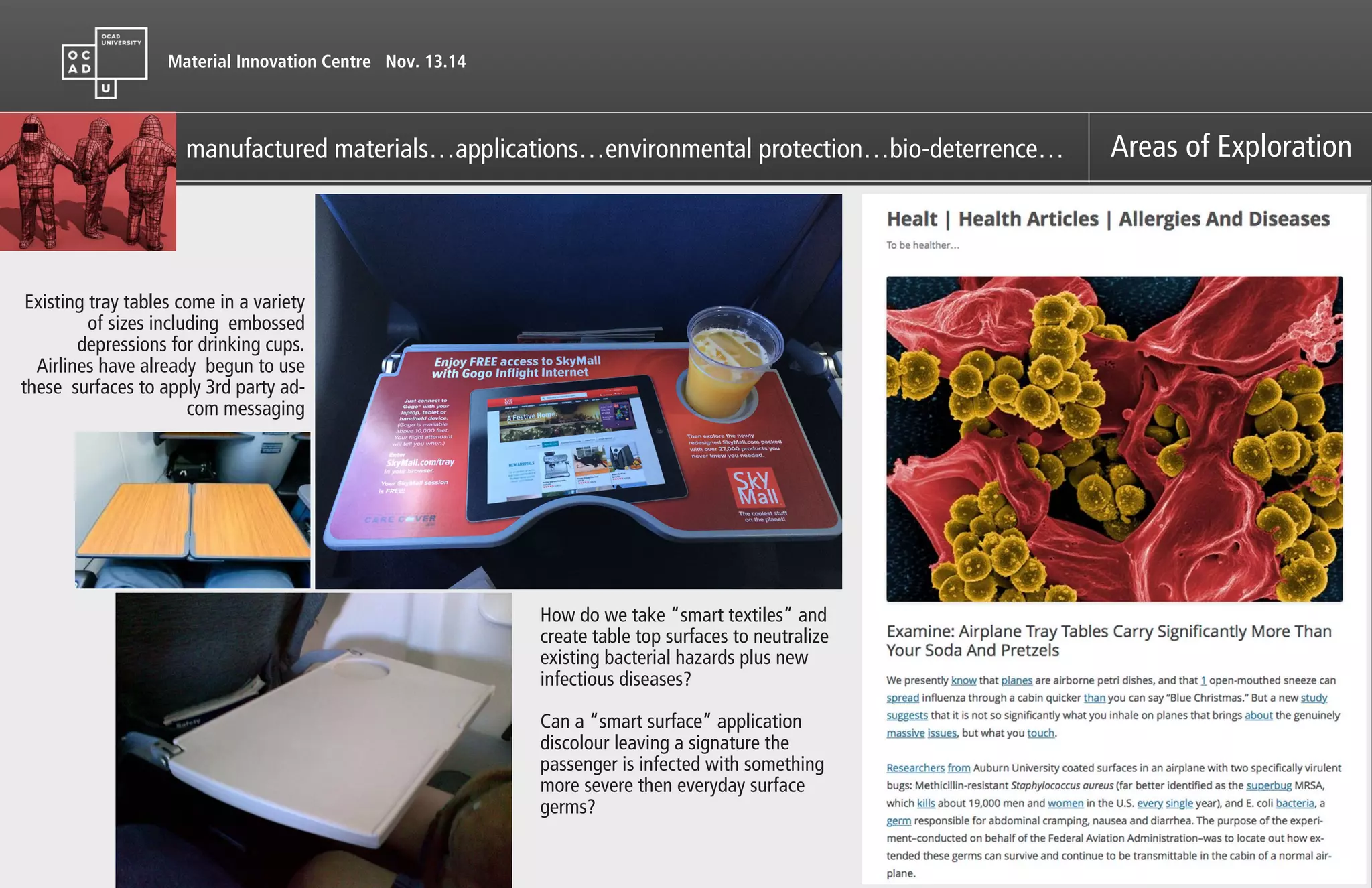
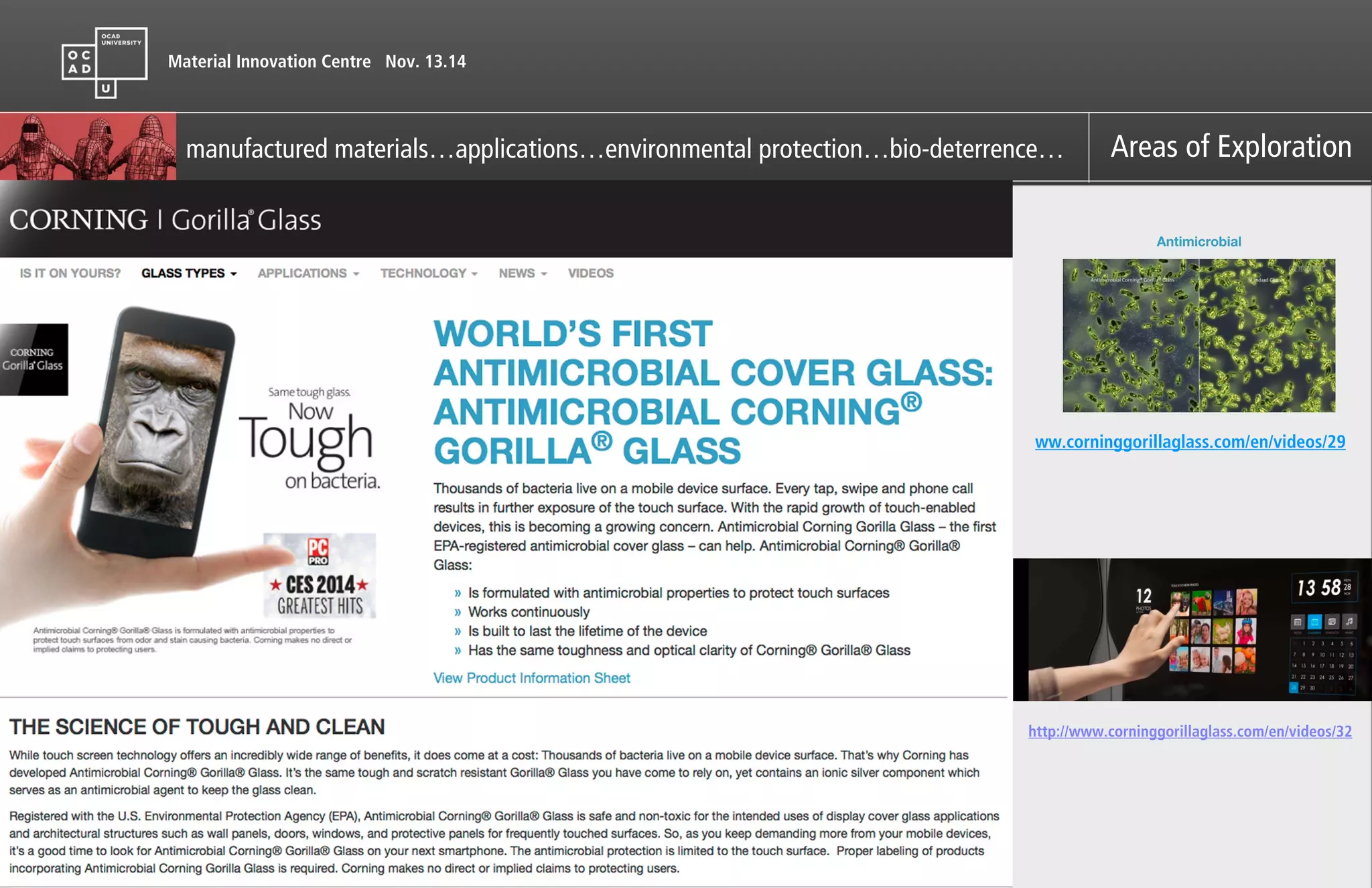
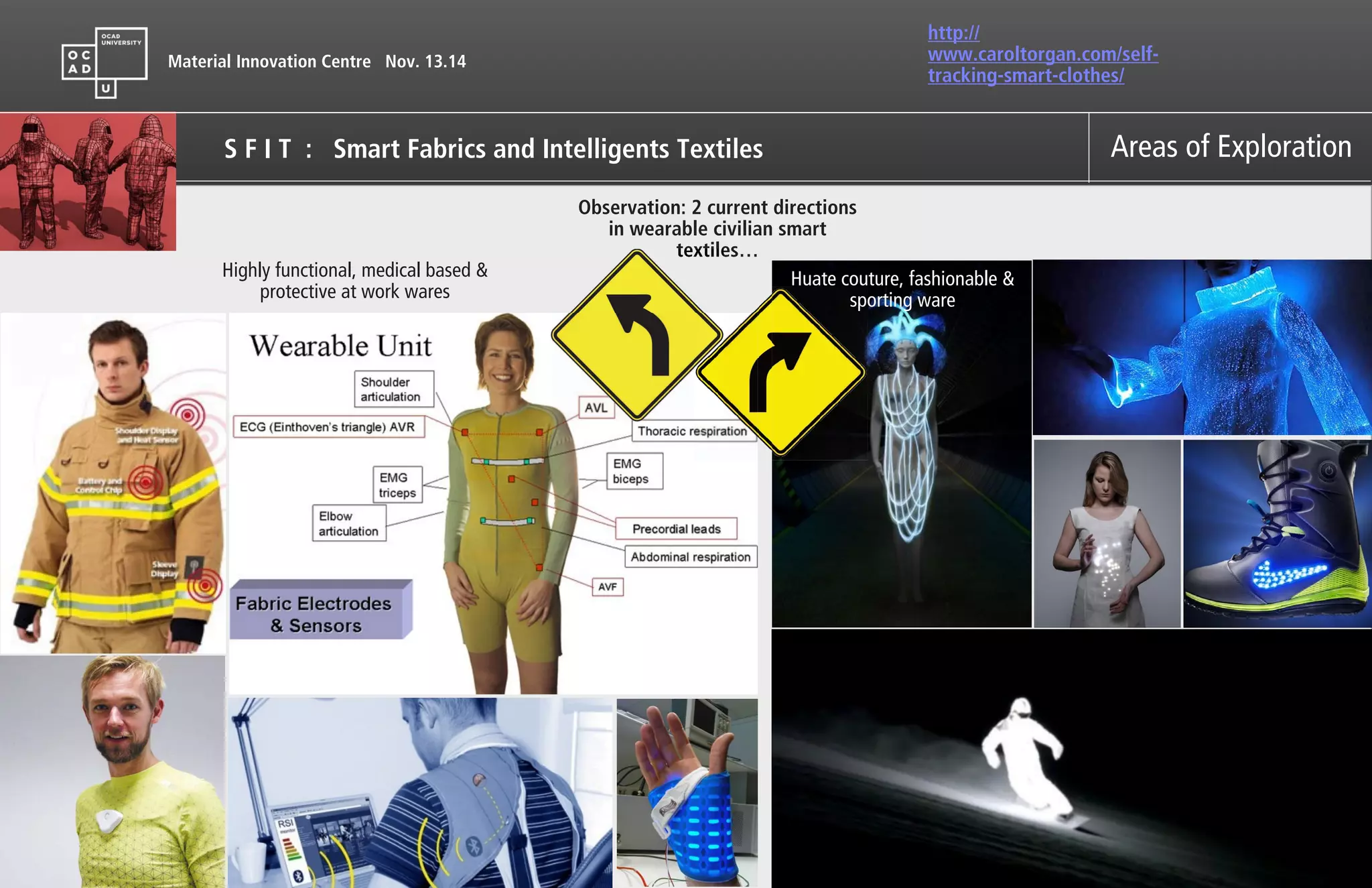
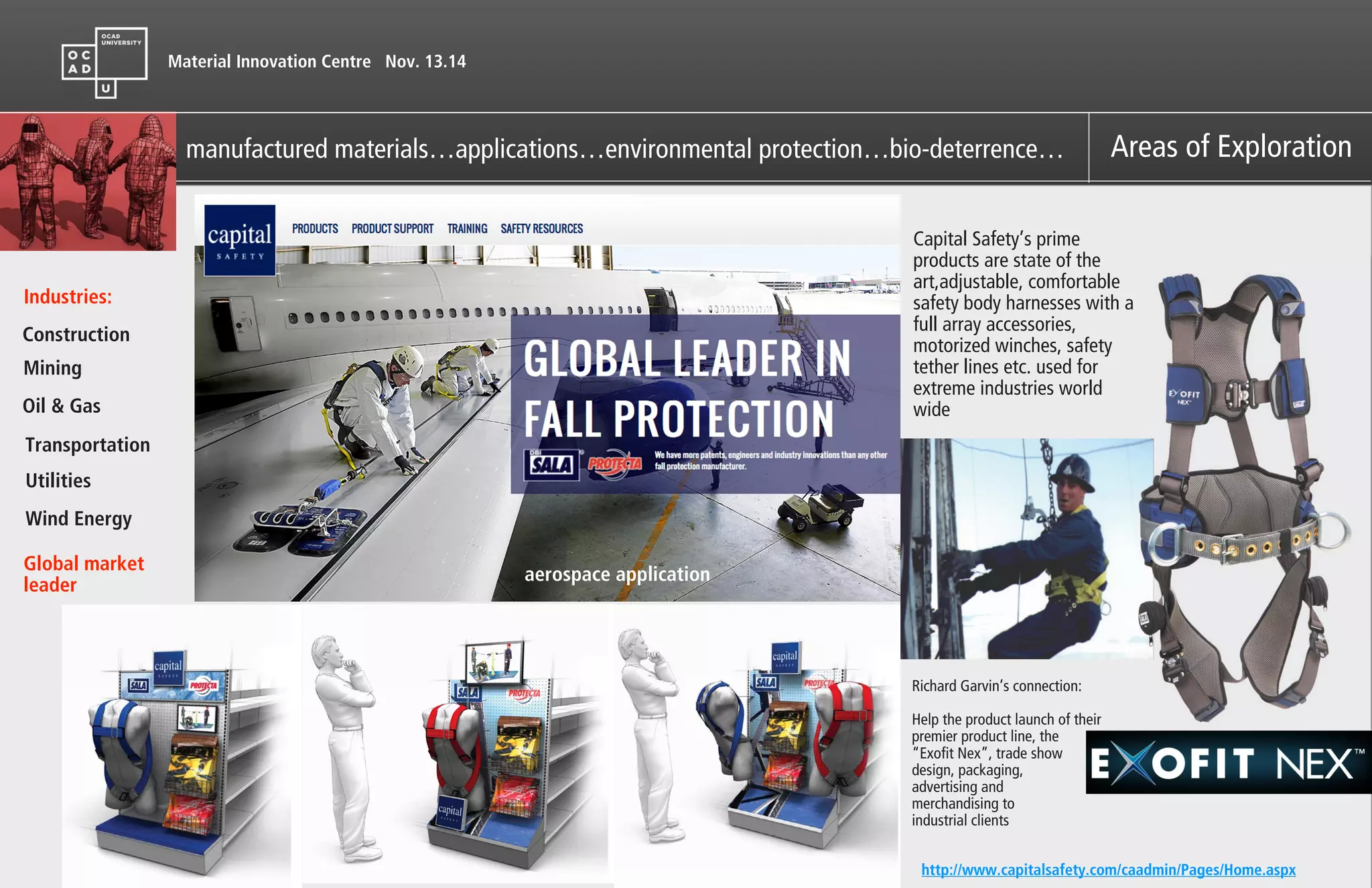
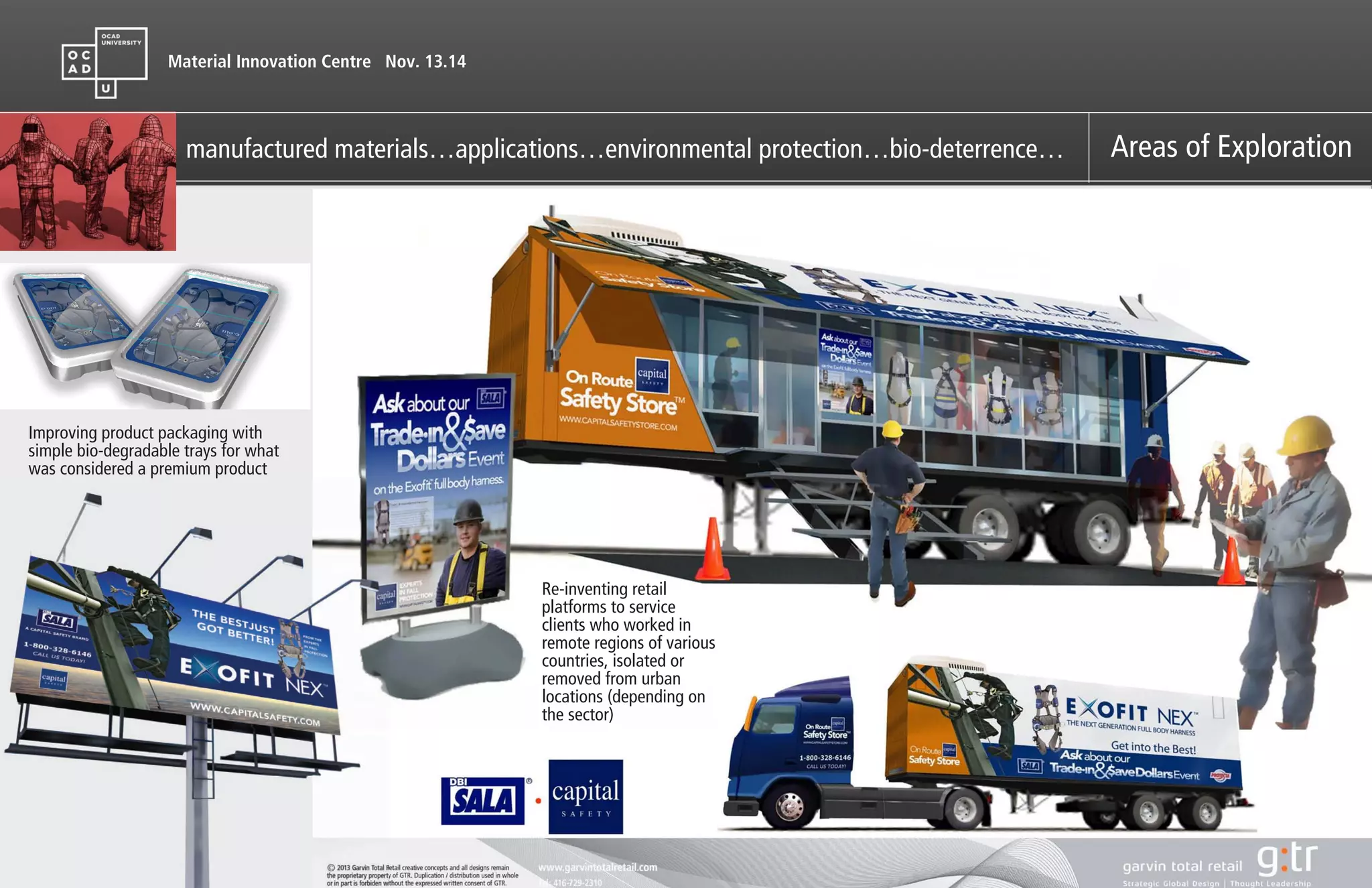
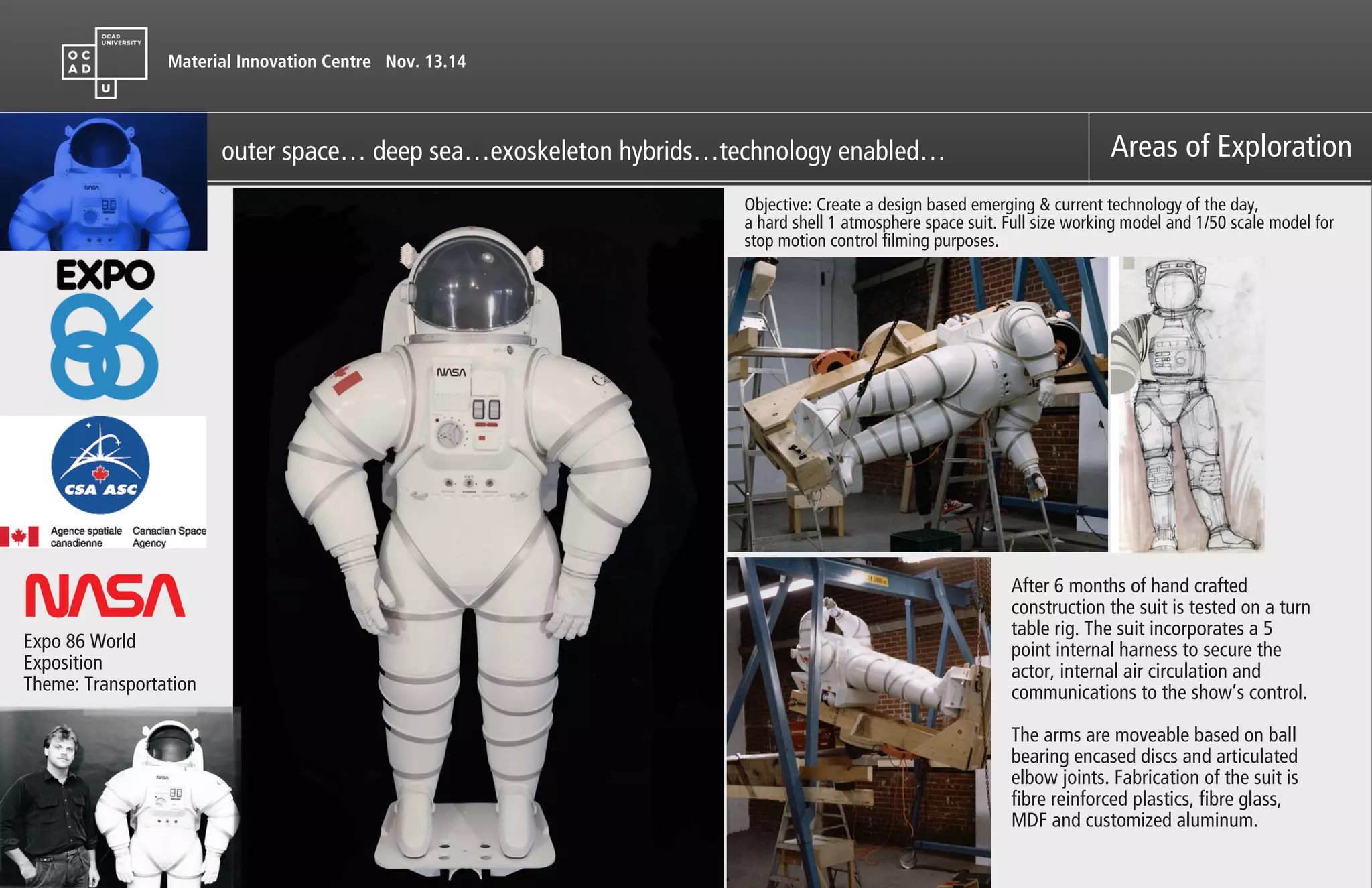
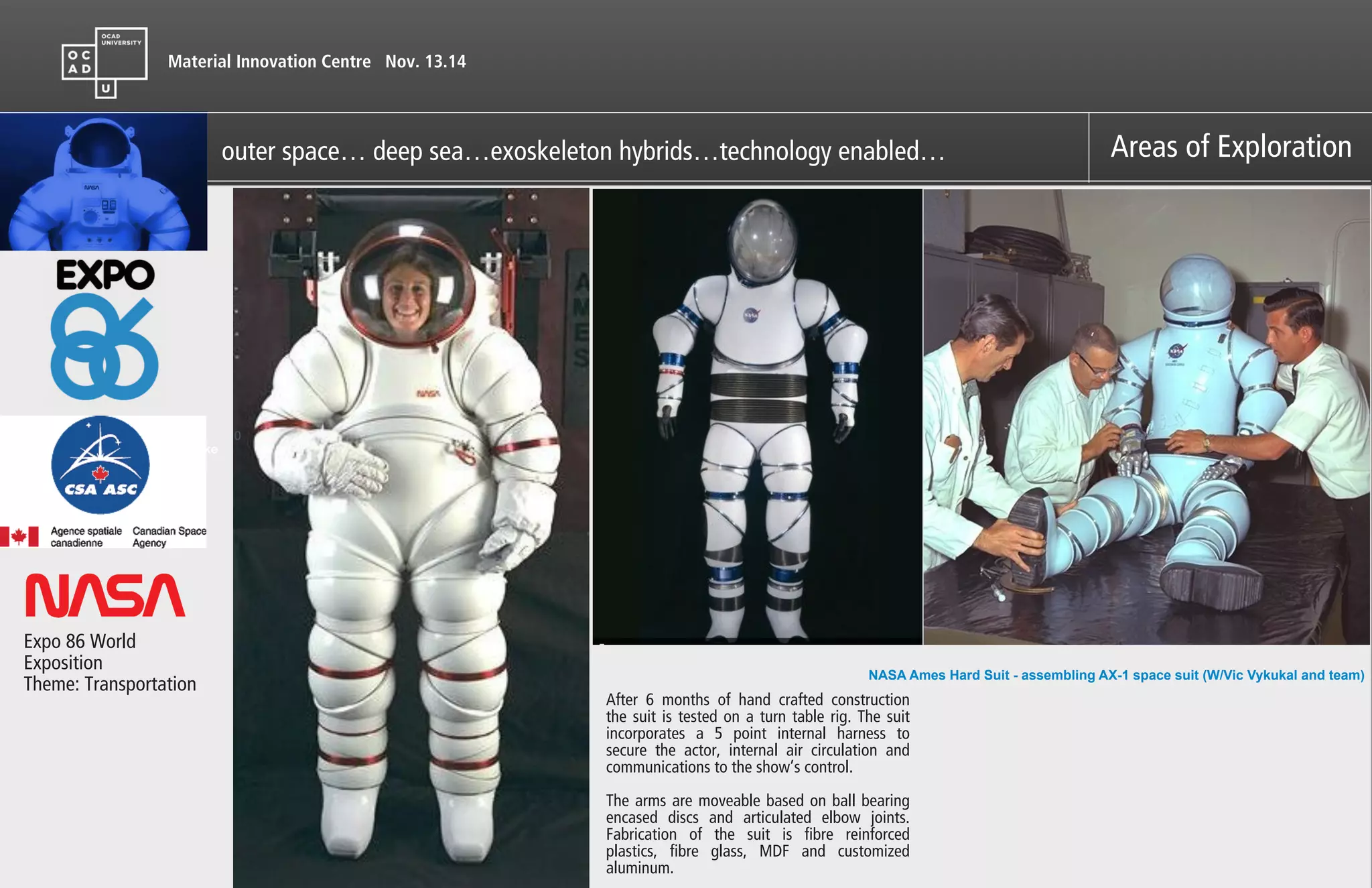
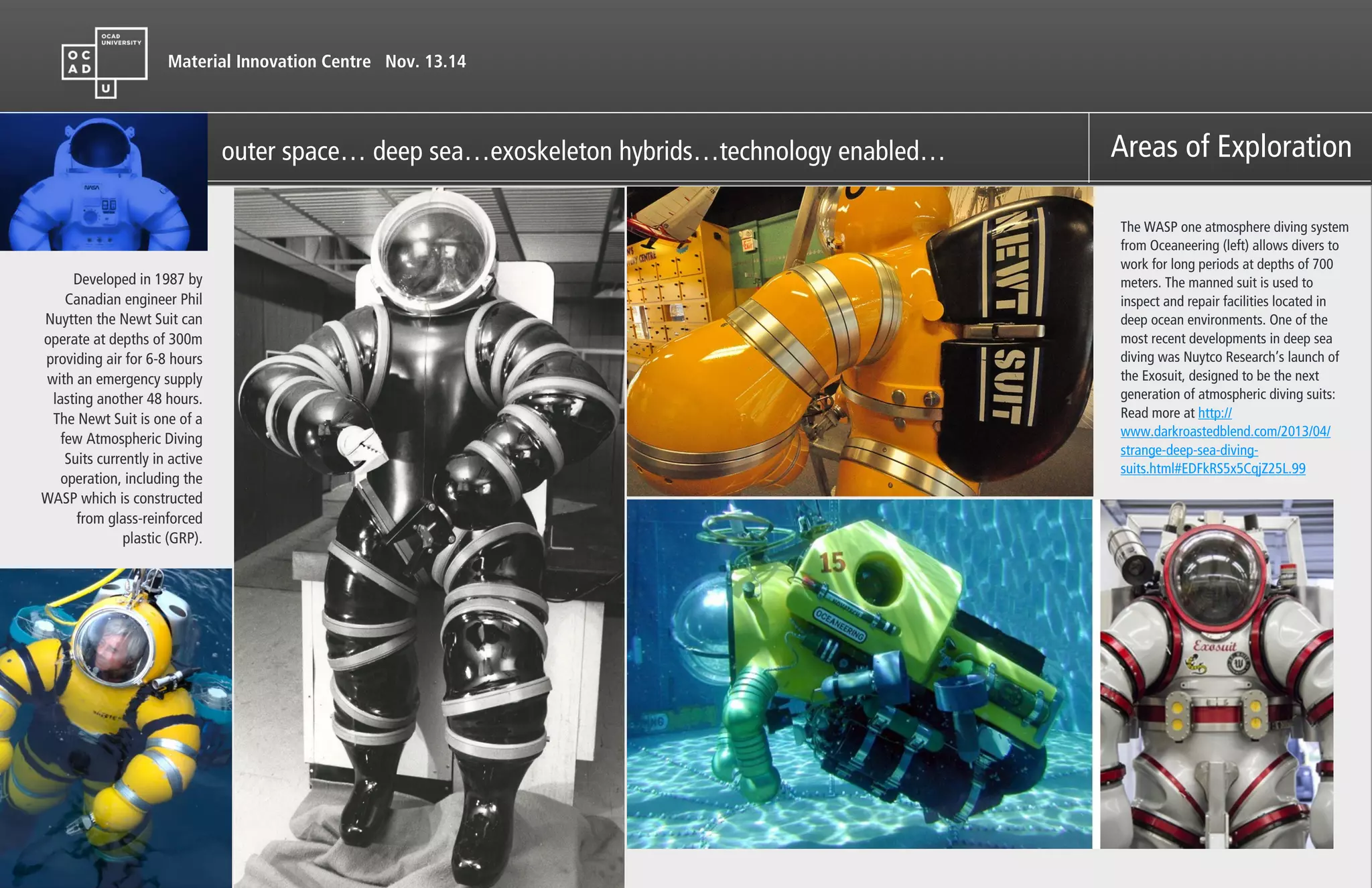
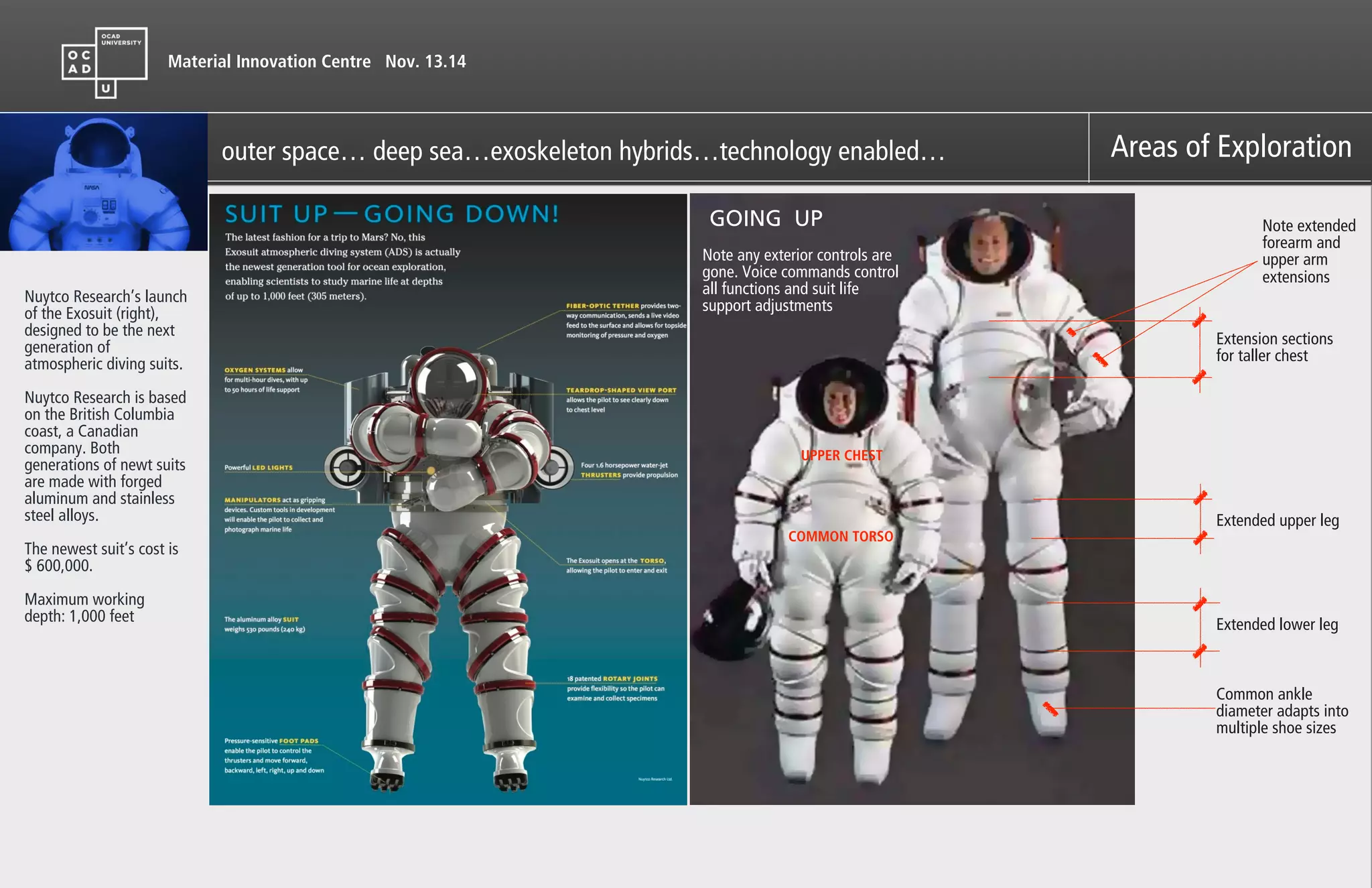
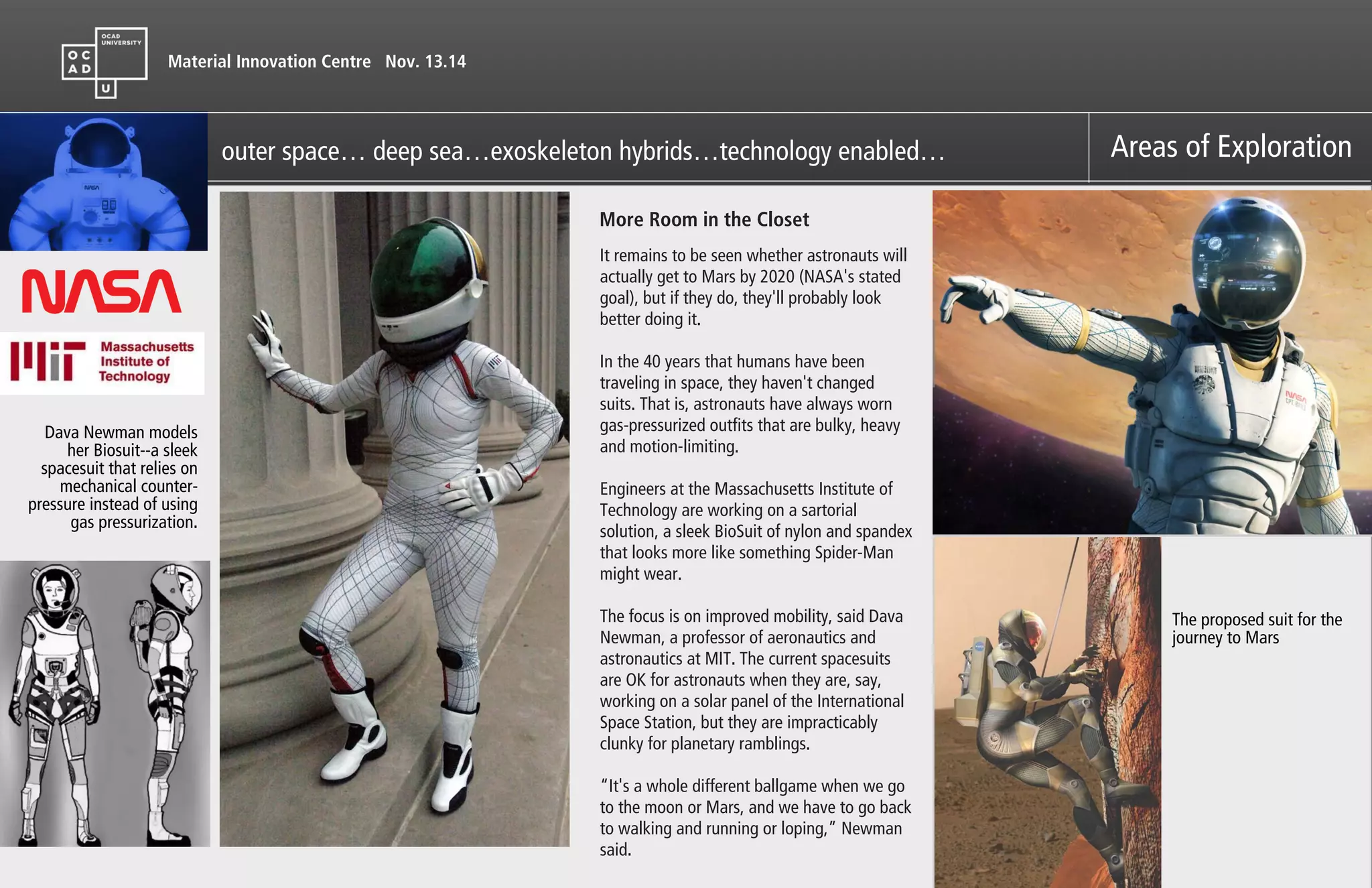
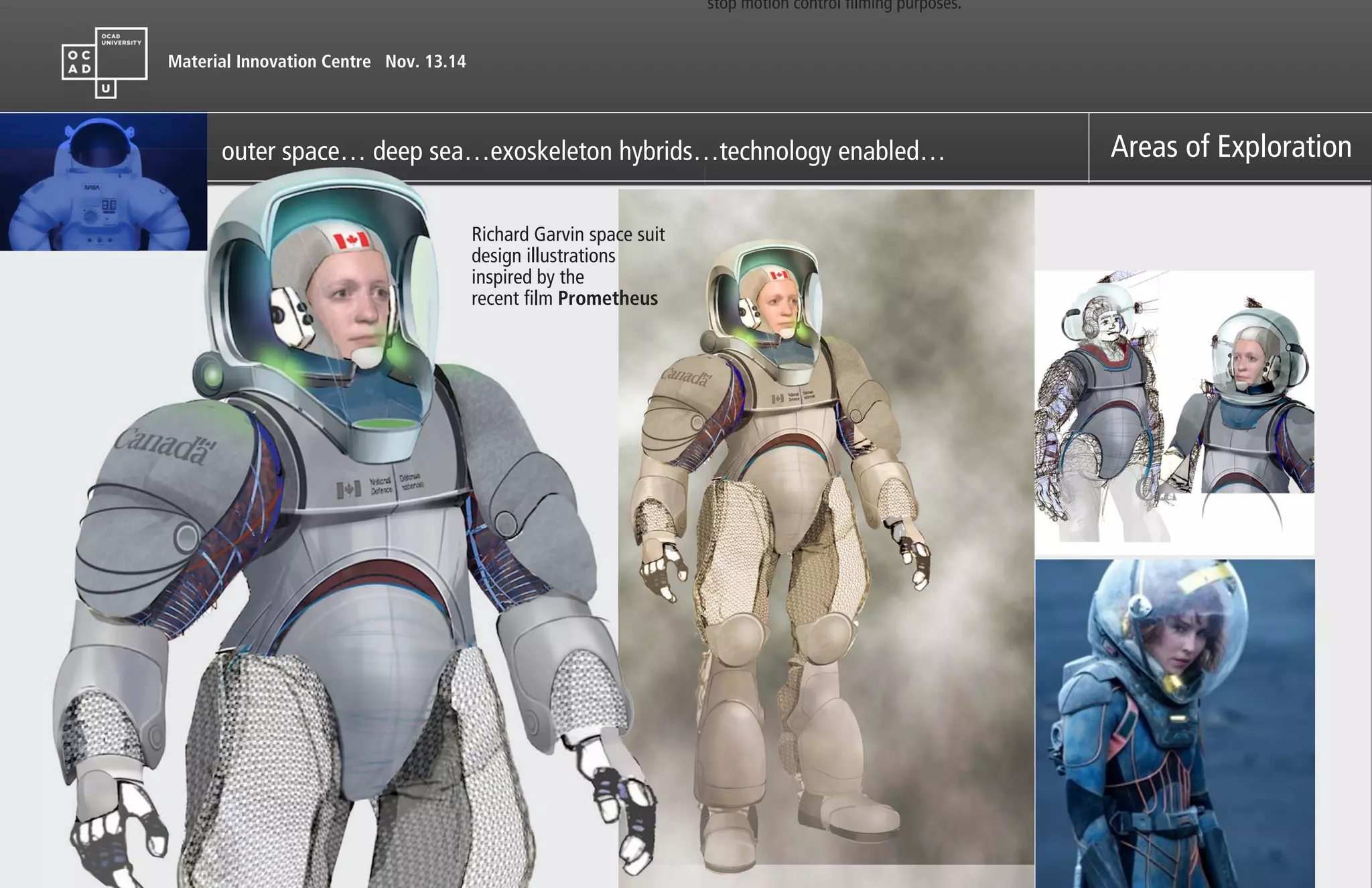
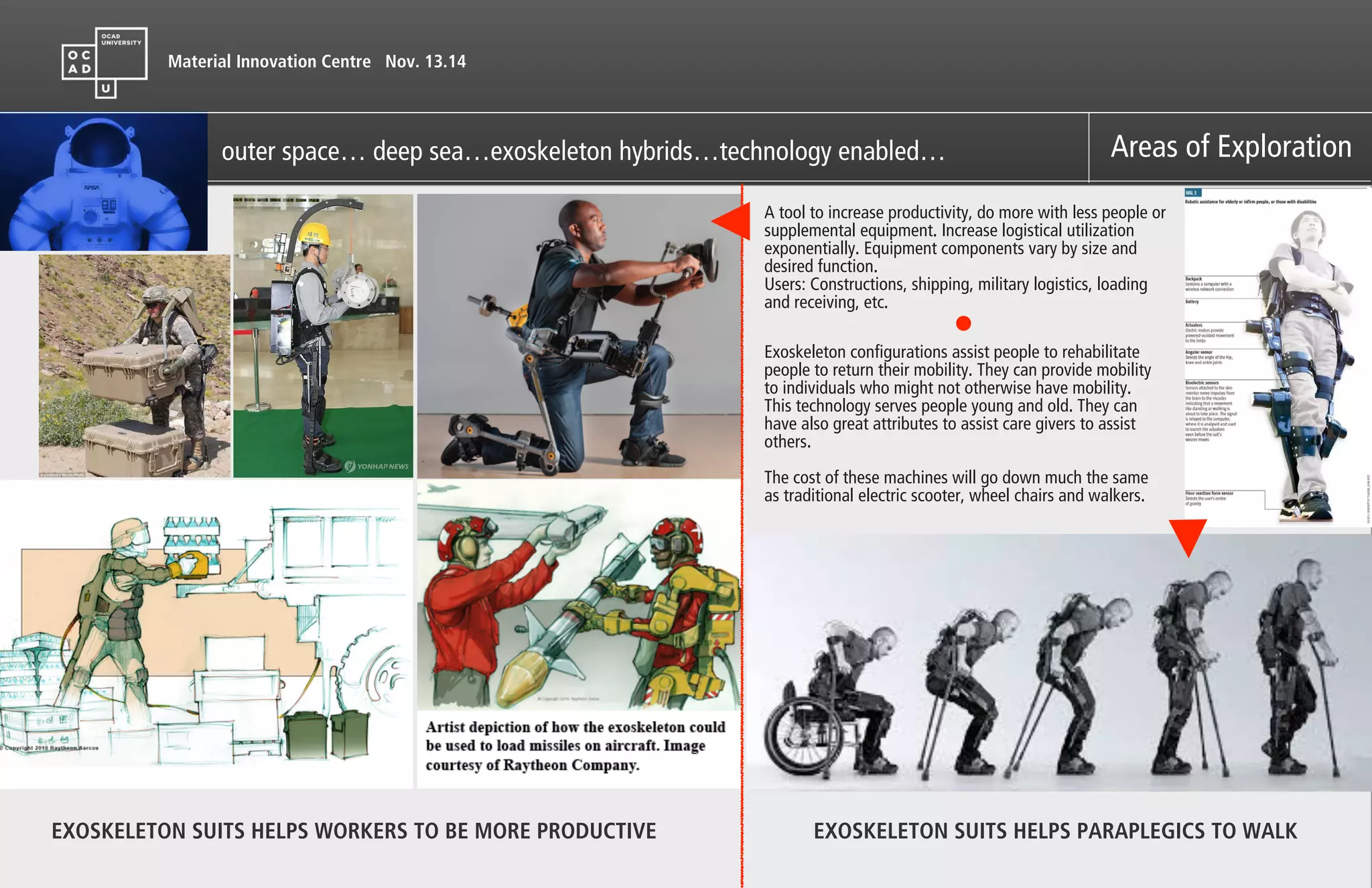

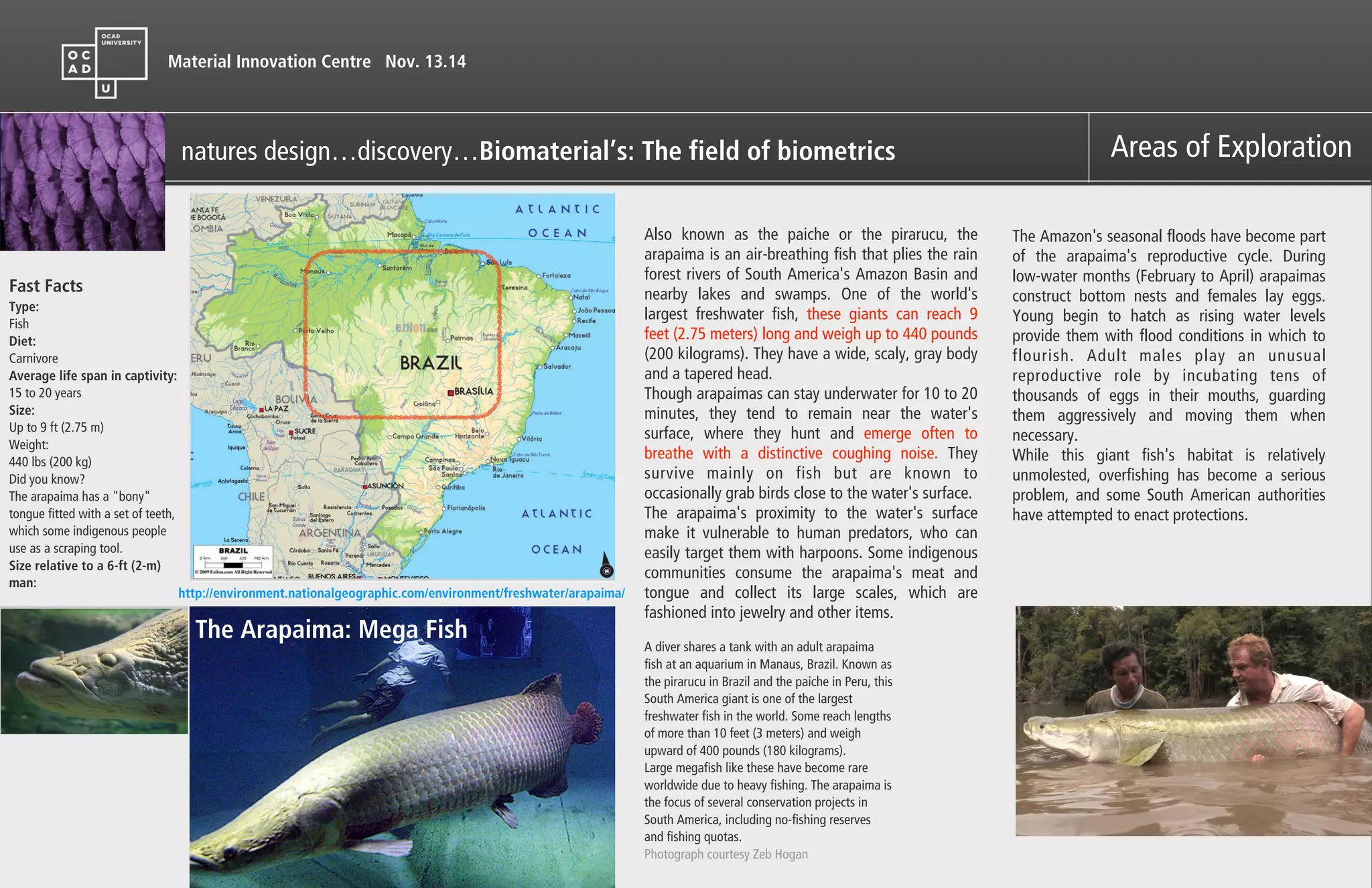
![Material Innovation Centre Nov. 13.14
Areas of Exploration
Piranhas: Extreme carnivorous fish
Piranhas have a reputation as ferocious
predators that hunt their prey in
schools. Recent research, however,
which "started off with the premise
that they school as a means of
cooperative hunting", discovered they
are timid fish that schooled for
protection from their own predators,
such as cormorants, caimans, and
dolphins. Piranhas are "basically like
regular fish with large teeth".[9]
http://en.wikipedia.org/wiki/Piranha
natures design…discovery…Biomaterial’s: The field of biometrics](https://image.slidesharecdn.com/7b6fc314-0d1e-42a4-83e4-521805639bb5-160713104755/75/New-Materials-Lecture-Lunch-LearnOCADU-21-2048.jpg)
